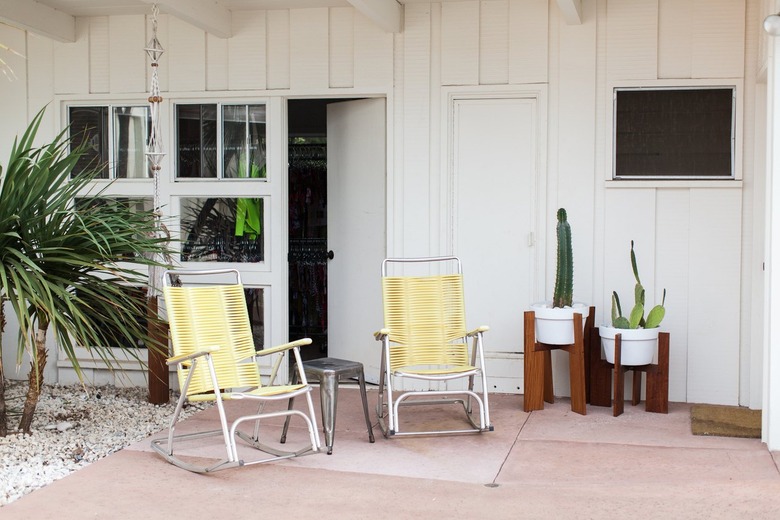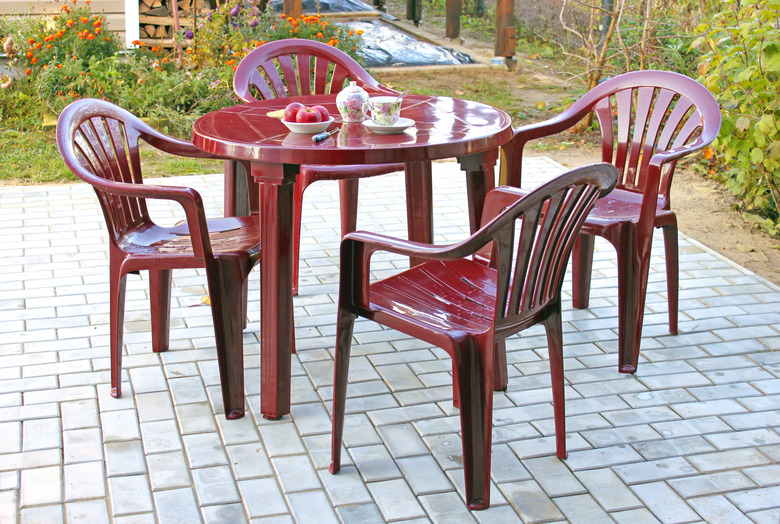How To Permanently Keep Paint On Plastic Surfaces
Is your plastic patio furniture or decor looking a little faded? Instead of tossing it out, consider giving it a coat of paint to give it a makeover. Plastic is more challenging than wood when it comes to getting paint to stick. While you can't guarantee a permanent lifetime finish on any material, you can increase the chances of your painted plastic lasting with the proper preparation and materials.
Choosing Painting Materials
Choosing Painting Materials
Not all paint types work for plastic surfaces. You need a product specifically designed for plastic, which is often in the form of spray paint. A primer designed for use on plastic is also helpful to get a smooth foundation for the paint. Since you're using spray paint, you don't need a roller or brush for this project.
Prepping for Painting Plastic Surfaces
Prepping for Painting Plastic Surfaces
Starting with a clean plastic surface enables the paint to better stick to the material without bumps, bubbling or peeling. Use a little elbow grease with soapy water and a sponge to remove any gunk on the surface. When you're finished scrubbing, hose off the plastic to get rid of any remaining soap. Let it dry off completely before you continue your prep.
The next preparation step is to rough up the surface to give the paint more texture for clinging. You don't want to make gouges in the plastic or cause permanent damage, so use a fine-grit sandpaper and rub it over the surface gently. Focus specifically on shiny areas, which are often the smoothest and may have difficulty accepting paint. Hose off or wipe the plastic product again to get rid of the dust you created by sanding.
If you only want to paint part of the item or if you're doing different colors on different sections, use painter's tape to create the line. Place a drop cloth on the surface you're using to protect it from the primer and paint. You also want to well ventilate the space before you start applying any primer or paint.
Priming the Item
Priming the Item
Priming may not be required if the paint you buy for painting plastic is designed to work without one, but it doesn't hurt to have the smooth foundation. You definitely need a primer designed specifically for plastic if you're using regular spray paint. The specialty primer can create a foundation that helps the paint stick.
Apply the spray primer in even amounts to the completely sanded, clean and dry plastic item. Hold the can the same distance away from the item at all times and keep it moving to avoid pooling in one spot. Let the primer dry completely before moving on to the paint.
Painting the Plastic
Painting the Plastic
When using spray paint, hold the nozzle pointed at the plastic surface at a distance of about 12 to 18 inches away. Always keep the nozzle that same distance as you are spraying the surfaces of the item to get consistent coverage. Painting plastic works best when you use a smooth, continuous motion, overlapping the paint as you go to get an even layer.
You'll likely need to apply multiple coats of the spray paint to get full coverage. It's better to do more thin layers instead of one thick layer, which may end up uneven or drippy. Always let the paint dry completely before you start on the next coat.
Sealing the Project
Sealing the Project
A clear acrylic sealer gives your freshly painted plastic surface an extra layer of protection. You don't have to use the sealer, but it can help the results be more permanent, especially if you're painting an outdoor item. You can get a spray sealer to make the job easier.
Wait until the paint cures before applying the sealer. Spray it on the same way you did the paint, with consistent, smooth and overlapping sprays. One coat of sealer is usually enough, but you may want to apply more if the item is exposed to harsh conditions. Let each layer dry before applying another.
With the right paint and plenty of time for prep, you can achieve a smooth painted surface on your favorite plastic items. The fresh paint gives the item new life, and doing the job the right way ensures it lasts.

